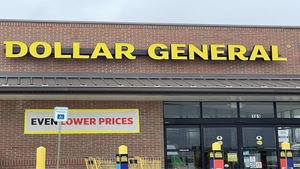Talking Pets With Purina's Joe ToscanoTalking Pets With Purina's Joe Toscano
Pet industry veteran discusses innovations and dog dating apps. WGB's Breakroom guest talks wellness, sales and innovation in the pet aisle, and reveals his top three cartoon dogs of all time.

Joe Toscano is VP and director of trade and industry relations for Nestle Purina.
Jon Springer: Welcome to the Breakroom, Joe. So what does a vice president and director of trade and industry development for a pet food company do?
My job description reads like this: The VP/director trade and industry development is the senior statesman representing Purina within the pet care industry. The role is responsible for building relationships, influence and impact at the highest levels of our customers and the industry, including all relevant industry associations.
To add some context, I work on developing customer and industry relationships that can help further our pet category vision. At Purina, we believe that people and pets are better together. It’s this belief that puts the well-being of pets and the people who love them at the center of everything we do—from discovering nutritional breakthroughs to supporting the needs of the communities where we live and work. In my role, I get the opportunity to share Purina innovations, strategies and our sales priorities with many of our customers at a senior level to enhance pet category sales potential.
We’ve witnessed a lot of change in pet care, both in the kinds of things we buy for our pets and the places we buy them. What do you see as the most impactful forces changing the industry?
I will celebrate 30 years with Nestle this coming July, and I have been a part of the pet industry throughout my career. I think there are two key trends currently affecting the industry.
First, the move toward “better for you” has translated to “better for your pet.” People are very interested in what they feed their four-legged family members, which means they want to know what’s in the food as well as what’s not in the food. This leads to consumers buying more natural, superpremium and/or “ultra” products. Grocers and mass merchants already have these brands in their stores and can convert shoppers in their stores by showcasing these products in the aisle and on display.
The second trend affecting the industry is e-commerce. At Purina, we have found that pet shoppers who shop both online and in-store spend twice as much as in-store-only shoppers. We also know that store-based retailer e-commerce outgrew pure-play pet e-commerce in 2018, and there are 2.5 times more curbside pickup locations in the U.S. this year vs. last. That means two things: First, consumers are continuing to move to e-commerce, whether it is for home delivery or pickup, and retailers need to meet them when and where they choose to shop; and second, it is important for retailers to show their shoppers that they offer online shopping, because it may allow them to realize both the in-store and online sales opportunities.
Purina hosted its inaugural Pet Care Innovation Summit recently. What are the coolest things you saw there?
There is no shortage of innovation or promising startups in the pet care industry right now, and the Pet Care Innovation Summit had many of the brightest businesses at the show. A couple that stood out to us were Los Angeles-based Basepaws, which sequences the DNA of cats and provides health and dietary recommendations to customers; and Dig, a startup dating app connecting like-minded dog owners. Basepaws left the summit with a planned $125,000 investment from Purina, and Dig will get $50,000 in digital marketing support from Purina and Centro.
Many supermarkets are concerned about losing pet-aisle sales to online competitors and direct-to-consumer brands. What can they do to keep and grow their share? What do supermarkets that have strong pet-food sales tend to have in common?
While there is a move to shopping online, the majority of the pet food business is still sold from stores. As shoppers look for buy-online, pickup-in-store or home-delivery options, it’s important for retailers to show their shoppers in-store and in-aisle that they offer online shopping. We know that most shoppers are not picking their store-based retailer as their online retailer. And once they make a choice, they tend not to come back. So tell them in-aisle that you have a platform, make it easy for them to buy once they get there, and keep that extra loyalty in your franchise.
The best pet food retailers have a few things in common:
They tend to have more space both in-aisle and display. You have to be able to communicate to your shoppers that you are in the pet department, and there is no better way than showing it to them outside the aisle. Plus, there are huge incremental lifts when you display and promote pet food.
They have a vast assortment. You don’t have to carry every product, but having the right number of items in wet cat or the different needs dry pet consumers are looking for is key.
Everyday and promotional retail pricing is important. Almost 85% of pet food sales are done off the shelf at everyday price. Your retail prices have to be competitive—not the lowest—but competitive and regular promotions can drive additional trips and pantry loading.
An array of treats, secondary placement and an annualized merchandising plan all add profit and sales to your category.
Speaking as a parent of two ravenous cats, we’re concerned about the rising cost of pet food. What can we do?
At Purina, we have different brands that meet different consumer goals and price points. All of our formulas meet or exceed AAFCO (Association of American Feed Control Officials) guidelines. A couple of suggestions: Buying larger sizes tends to save you more money per pound; paying attention to promotions and local ads can allow you stock-up opportunities; and keeping pulse of key digital offers and coupons can save you money also.
Lightning Round
How many pets do you have in your home now?
I have a 7.5-year-old English bulldog named Stewie. He has been a Purina One pup since I got him at 16 weeks old.
Name the top three cartoon dogs of all time.
Scooby-Doo, Hong Kong Phooey and Droopy. If I could add a fourth, it would be a tie between Underdog and Astro from “The Jetsons.”
Coolest place to shop for food in St. Louis?
We are lucky to have many great food shopping options in the St. Louis area, and I frequent all of them. I will say I am partial to the Chef Shoppe’s popcorn in Edwardsville, Ill., as well as frozen custard from Annie’s in Edwardsville and Bobby’s in Maryville, Ill.
Best piece of business advice you ever got?
Once I began managing people, someone told me, “You will be the conversation at someone’s dinner table on regular occasions.” Remember that when you decide how you choose to treat people. Pretty eye-opening.
About the Author
You May Also Like






.webp?width=300&auto=webp&quality=80&disable=upscale)